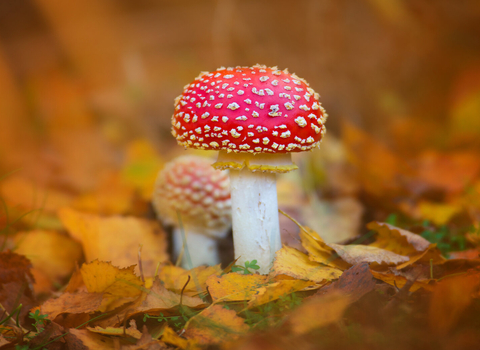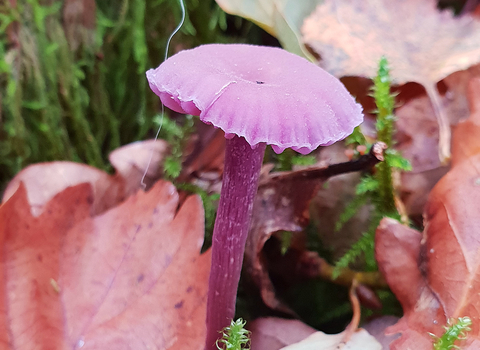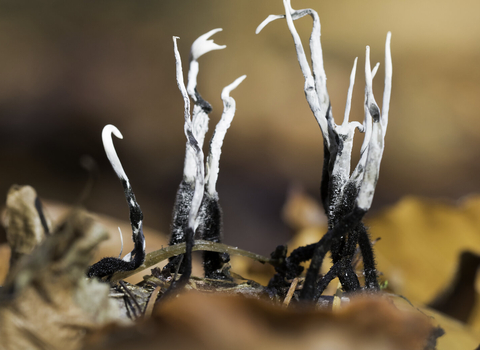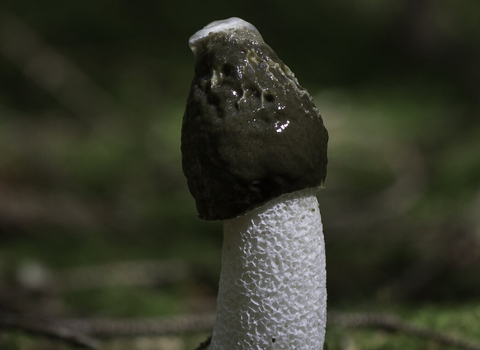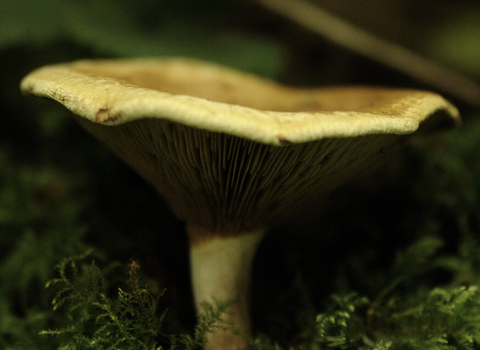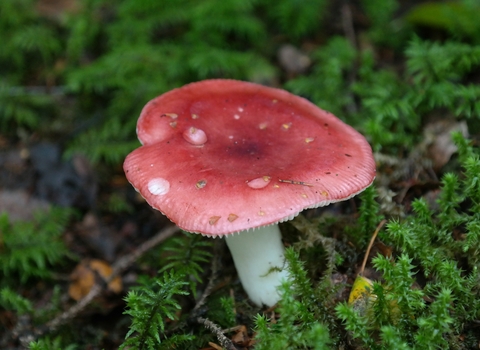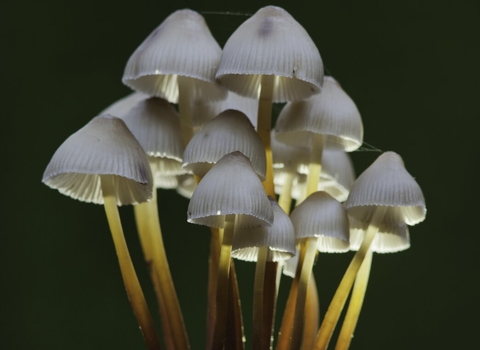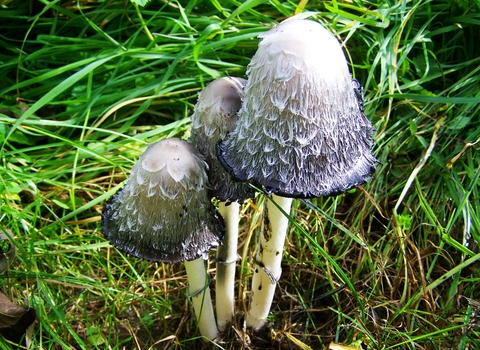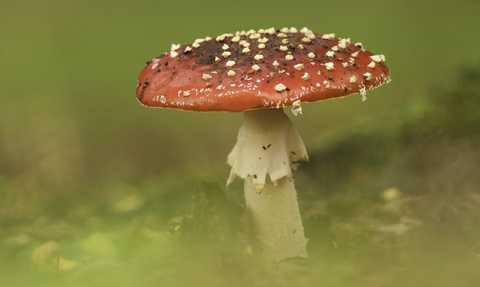
Fly agaric, Amanita muscaria, in woodland, October, Norfolk - Dawn Monrose
Fungi - a quick guide to Montgomeryshire's most common and easy to identify species
Why a quick guide
Fungi are one of the most challenging groups to identify. There are hundreds of different species and some are so similar to one another that examination of microscopic features are necessary, or even, in some cases, DNA analysis. Nevertheless, fungi is a fascinating kingdom and many species captivate us with their bright colours, bizarre shapes and ephemeral nature.
Autumn is recognised as the most exciting period in the fungal calendar, but some species can be found fruiting in all months of the year. Here are some to look out for.
Woodland fungi
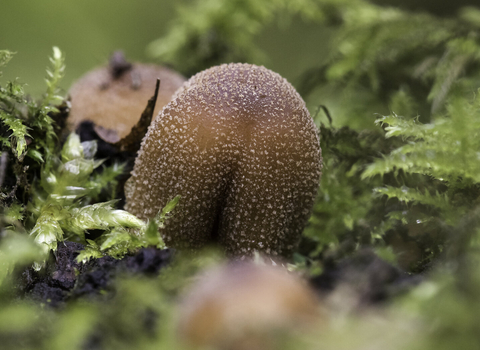
Chris Lawrence
Glistening Inkcap
One of many inkcaps which ‘deliquesce’ (become liquid) to spread their spores. This particular inkcap grows in large clusters at the base of trees, and has tiny glistening particles on its cap which make it easy to identify and give it its name.
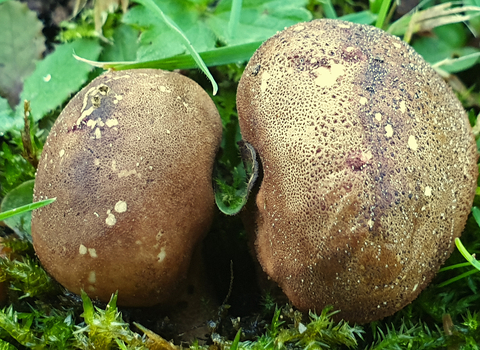
Common Earthball (Scleroderma citrinum) © Tamasine Stretton
Common Earthball
A relative of the puffball. The tough yellowish casing splits open to release billions of spores which are helped on their way by raindrops. The Common Earthball has no stem and sits directly on the woodland floor.
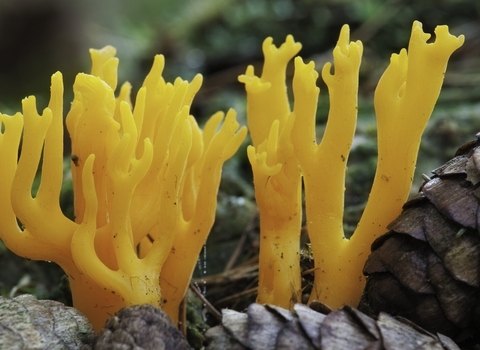
Yellow Stagshorn (Calocera viscosa), Bolderwood, New Forest National Park, Hampshire, England, UK © Guy Edwardes/2020VISION
Yellow Stagshorn
Another very common and easy to ID twiggy fungi, this time in beautiful yellows and oranges. This branching fungus is rubbery, rather than soft, like most of the coral fungi and is always growing from wood even if it doesn’t appear to be.
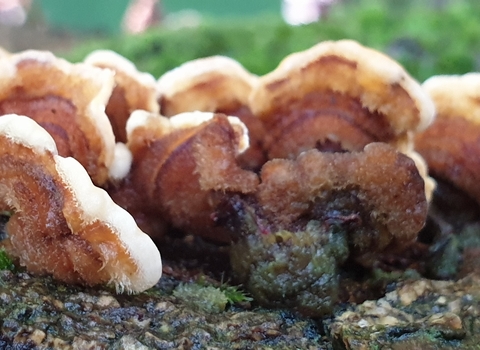
Hairy Curtain Crust fungus (Stereum hirsutum) © Tamasine Stretton
Hairy Curtain Crust
One of the bracket fungi and grows in clusters of yellows and oranges, usually yellow on the leading edge. Each bracket has a wavy look to it supposedly similar to a partly drawn curtain and a fuzzy feel to the upper surface, hence its name! It is also sometimes known as False Turkey Tail, but has a smooth underside instead of pores.
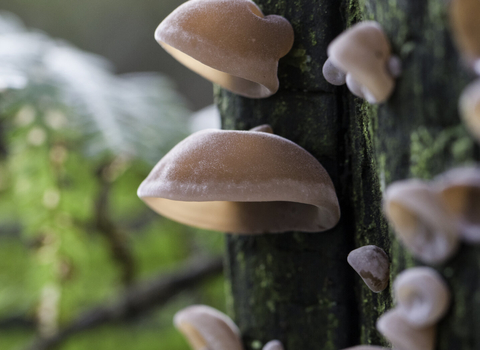
Jelly Ear fungus (Auricularia auricula-judae) © Chris Lawrence
Jelly Ear
A rather odd jelly fungus that really can look like ears! It is most often found on dead or dying elder, but occasionally on other hardwoods.
There are so many fungi to learn, sometimes it’s enough to identify just to genus!
Milkcaps belong in the Lacterius grouping and are so known because of the latex that oozes from their gills once damaged.
Russulas are also known as brittlegills. As you can imagine they are brittle and snap easily. Often brightly coloured but with white gills and stem, they are very common in both coniferous and deciduous woodland.
Mycena are all those little bonnet fungi that seem to pop up all over. They grow in many different habitats and are often found in large numbers.
Grassland fungi
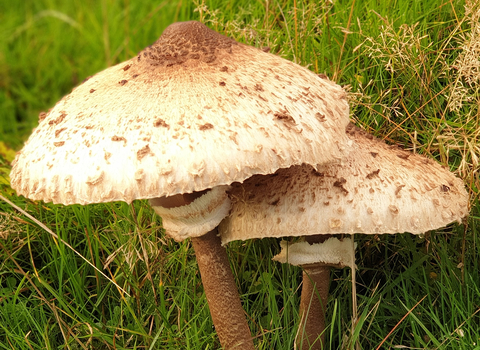
Parasol mushroom Macrolepiota procera © Tamasine Stretton
Parasol
A common grassland fungi that most people will have seen. Its large size makes it hard to miss! With its scaly cap, dark central umbo, large double ring and patterned stem, it is unlike much else that grows in grassland. There are similar species but they are much smaller and/or grow in other habitats.
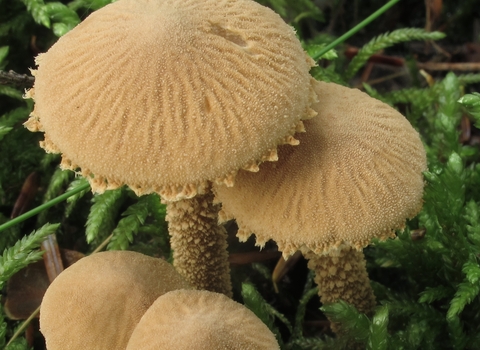
Earthy Powdercap (Cystoderma amianthinum) © walt sturgeon (Mycowalt) at Mushroom Observer, a source for mycological images. CC BY-SA 3.0 <https://creativecommons.org/licenses/by-sa/3.0>, via Wikimedia Commons.
Earthy Powdercap
A small but very common grassland fungi. Its cap has a powdery texture to the surface, hence the name and a jagged frill around the edge. The stem is also quite scaly beneath the ring, making this quite an easy one to identify.
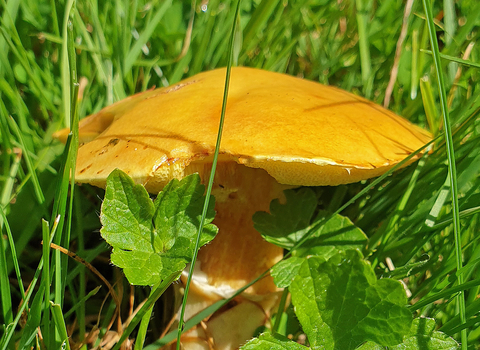
Larch Bolete fungus Suillus grevillei © Tamasine Stretton
Larch Bolete
One of the few mushrooms that has pores instead of gills. This is one of the easiest of the bolete fungi to identify. Found in grassy places beneath Larch, it has a bright yellow, very slimy cap.
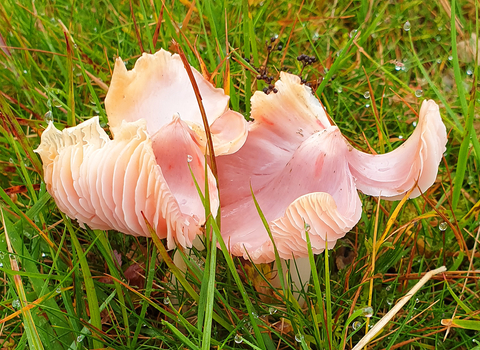
Ballerina Waxcap Porpolomopsis calyptriformis at Dyfnant Meadows Nature Reserve © MWT/Tamasine Stretton
Ballerina Waxcap
One of the easiest waxcap fungi to identify. They are only found in undisturbed, unimproved grasslands. Your best chance of seeing one is in a churchyard, although they have also been recorded at Dyfnant Meadows. Nature Reserve. Their baby pink cap starts out conical but splits as it ages to give it the appearance of a ballerina. The stem is pure white.
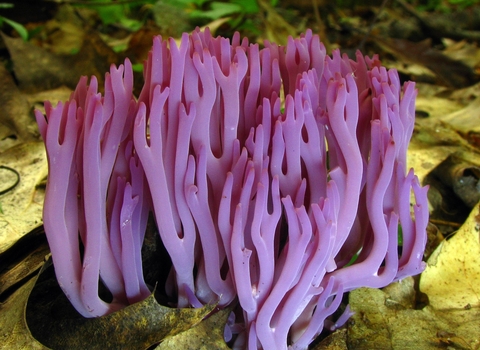
Violet Coral (Clavaria zollingeri). This image was created by user Dan Molter (shroomydan) at Mushroom Observer, a source for mycological images. CC BY-SA 3.0 <https://creativecommons.org/licenses/by-sa/3.0>, via Wikimedia Commons
Violet Coral
This is not a common species, but it is so easily identified, it is included here. The bright purple branches of this soft coral fungus is unmistakable. It is found in undisturbed grasslands, like the waxcap fungi.
Other corals and waxcaps found in undisturbed grasslands can be harder to identify, but they range from white, through yellow to orange and red and even green. So if you see these bright colours in the grass that is likely what they will be!
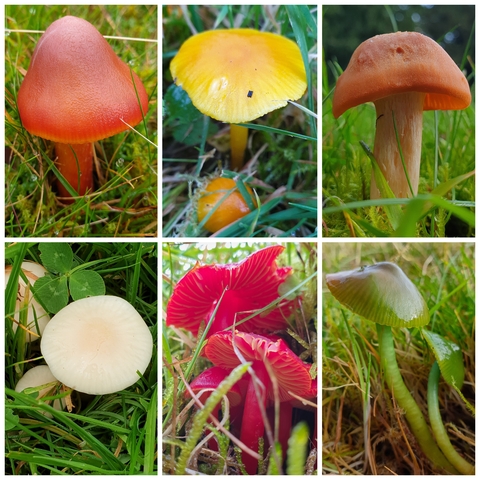
Waxcap fungi © Tamasine Stretton
Recommended reading
'Mushrooms' (Collins Gem) by Patrick Harding - a handy pocket guide you can take with you
'Collins Complete Guide to Mushrooms and Toadstools' by Paul Sterry and Barry O Hughes - great for the book case at home
'Mushrooms and Toadstools of Britain & Europe' Volumes 1 & 2 by Geoffrey Kibby - for even more species and information
'Fascinated by Fungi' by Pat O'Reilly - an interesting look at fungi and their habits and their habitats
'Mycelium Running' by Paul Stamets - a deeper look at the importance of fungi and their possible solution to some of the planet’s current issues!
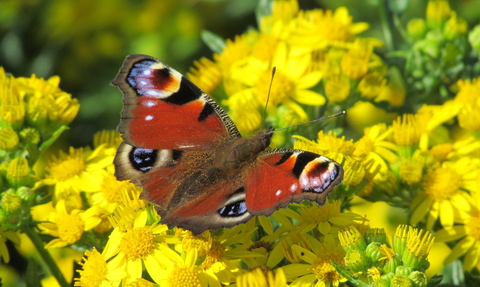
Peacock butterfly © David Hopley

